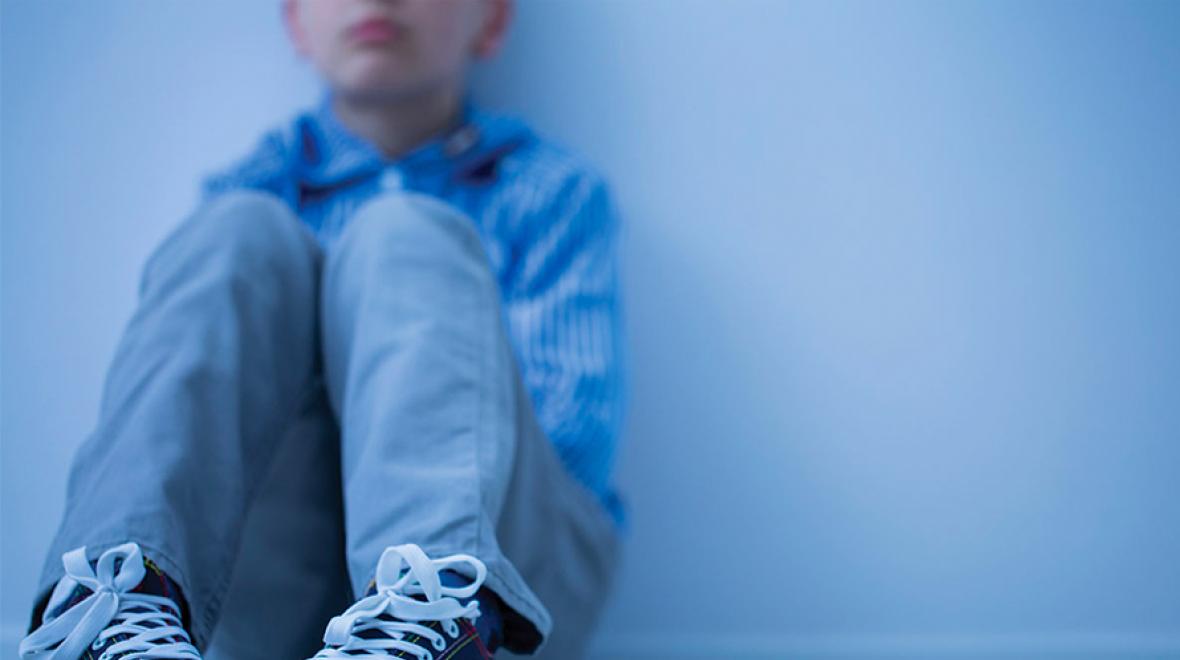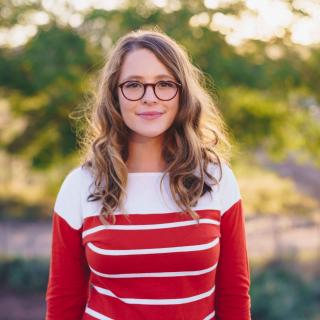
Oregon mom Michelle Fullerton thought she must be doing something wrong when her 4-year-old son began having huge, frequent emotional outbursts. Their family was losing sleep because he would lay awake crying at night, his mind reeling and unable to turn off. By kindergarten, his behavior was disrupting his learning at school.
“He would get so overwhelmed; he didn’t know how to handle his feelings and he took everything personally. He was constantly worrying and internalizing every little thing,” she says. “I felt so alone, like nobody understood what I was going through and everybody just thought I had a troublemaker.”
But Fullerton wasn’t alone.
According to the Child Mind Institute’s (CMI) Children’s Mental Health Report, anxiety is the most common psychiatric disorder among adolescents and children. Data from the American Psychiatric Association (APA) reports a prevalence of anxiety disorders in children and adolescents of between 10 and 30 percent, with a higher prevalence among females.
More striking still: Eighty percent of kids with a diagnosable anxiety disorder are not being treated for it — and the consequences are dire. In the long term, children with anxiety disorders have an increased risk of developing depression, substance abuse issues and low self-esteem, and when it comes to day-to-day living, anxiety disorders can interfere with academic and social development.
So why aren’t kids getting the help they need? Dr. Kendra Read, a clinical psychologist at Seattle Children’s Hospital who specializes in the treatment of youth with anxiety disorders, says there are a number of reasons kids aren’t being diagnosed and treated. Chief among them is the challenge of distinguishing developmentally “normal” worries and fears from pathological anxiety.
“Not always, but often, anxious youth are pretty quiet, compliant, extraordinarily conscientious and not causing a problem in the classroom, so they can be missed by those outside of the home — whether that’s teachers, coaches or others,” says Read.
“Anxiety may not feel as problematic or it may kind of pale in comparison to other concerns going on in the family,” she continues. “A lot of times, people just kind of chalk it up to being shy. And, of course, some level of anxiety is typical for all individuals — so it can be difficult to parse apart what is considered typical and what is actually problematic.”
Sometimes, as in Fullerton’s case, children with anxiety exhibit symptoms more akin to behavioral disorders, which can lead to misdiagnosis.
Read says the stigma of mental illness also plays a role in underdiagnosis and lack of treatment for anxiety disorders in youth, while the CMI report points to the shortage of school psychologists and child clinical psychologists.
So what, as a concerned parent, should you be looking for? When does a typical age-appropriate anxiety — such as a fear of the dark — become something to worry about?
What to look for
Anxiety disorders often occur alongside other anxiety disorders, depression and behavioral disorders like ADHD.
While there are several types of anxiety disorders — as detailed below — all are characterized by “persistent, irrational and overwhelming worry, fear and anxiety that interfere with daily activities.” Read likens it to “a smoke alarm going off when there’s no fire.”
The “big three” anxiety disorders for kids, she notes, are generalized anxiety disorder (GAD), separation anxiety and social anxiety but there are many others, including panic disorder, selective mutism and individual phobias. Understanding the nuances of each “helps us be more specific in terms of targeting our goals for that child,” she says.
The classic signs of anxiety in children are excessive worry, avoidance of challenges such as speaking in front of the class or trying new things (which can manifest itself as shyness), and an unwillingness — sometimes to the point of tantrum — to engage in healthy or fun activities, says Laura Kastner, Ph.D., a clinical professor of psychiatry and behavioral sciences at the University of Washington and ParentMap author.
Children with anxiety may also exhibit physiological symptoms such as headaches, stomachaches and panic attacks, she adds.
What causes anxiety?
Like most mental health disorders, anxiety arises from biological, psychological and environmental risk factors, which include genetics, cognitive factors, personality and life events.
There are, however, specific stressors that can exacerbate anxiety, say both Kastner and Read.
“Media consumption is such a dopamine-rich thing, and now with the constant news cycle, it’s like every five seconds there’s danger. Our sympathetic systems get so jacked up when in reality we know that the world has never been safer,” says Kastner.
She adds that this heightened state applies to both children and their parents. Understanding the effect of media on our brain chemistry can help us be more compassionate toward ourselves and our children — and that kind of positive modeling can help.
The way out of anxiety is through, not around.
“It’s totally normal to be anxious, but if we’re modeling avoidant behavior, kids are going to pick up on that,” says Read. “How parents respond and engage with their environment is really powerful.”
Also, beware of parental pressure in regard to school achievement, which Kastner says often relates to stress about the economic and financial success of our children.
“We react a lot to what would be normal bumps in the road — a child gets a C on a test, for example — with an outsized reaction, and we’re making it worse for our kids,” she says. “We need to be responsible for our own stress levels. That’s our parental responsibility. If we have our bearings to go do some breathing or take a time-out for ourselves, we can be better people when we interact with our kids.”
Treatments and approaches
There is relief for kids dealing with anxiety. On the list: evidence-based clinical treatments like cognitive behavioral therapy (CBT), and prescription medications like selective serotonin reuptake inhibitors (SSRIs) and serotonin norepinephrine reuptake inhibitors (SNRIs). There’s also a plethora of holistic and non-traditional approaches backed by varying degrees of research including mindfulness practices, herbal remedies and essential oils. Fullerton, for example, says small daily dose of cannabidiol (CBD) oil has made the biggest difference for her son.
Research on CBD oil as a solo treatment for youth anxiety disorders is still in its infancy, but Fullerton said she could not deny the positive impact it has had on her child. Since starting the treatment a few months ago after an exhaustive search for information and a friend’s recommendation, she decided it was worth a try.
He hasn’t had a single emotional outburst and “has been much more patient, sleeps well and is doing better at school,” she says.
Also of note: mindfulness techniques that cultivate a child’s awareness of their emotions. By teaching a child to accept and sit with a feeling rather than “smash it down,” you help them learn that what they’re experiencing is only a perceived, temporary threat rather than a bigger, more anxiety-fraught concern.
As for pharmaceutical medicines, SSRIs (like Prozac and Zoloft) and SNRIs (like Effexor) are the only ones proven to be both safe and effective for treating anxiety in young people, with SSRIs being most commonly prescribed. Both SSRIs and SNRIs have side effects, including withdrawal, suicide ideation and sleep disturbances.
The good news: After 36 weeks, the effectiveness of CBT, medication or a combination of the two produced strong results, per the Children’s Mental Health Report. Upward of 80 percent of people saw an improvement with treatment. Here’s the important part, notes Read: “The way out of anxiety is through, not around.” That means confronting what produces the anxiety. One way she’s seen this done: is by teaching kids to “ride the wave.”
Looking ahead
For Fullerton, she’s seen positive change in her son, who was officially diagnosed with GAD at age 8.
She opted out of medication for him (she felt it was important for him to learn to manage his anxiety on his own instead of relying on medication over the long term). He regularly sees a therapist, who’s taught him how to use mindfulness and breathing techniques. This includes going on a walk, playing basketball and keeping a journal to help him “move through his emotions to get to a more manageable place,” Fullerton says.
She also limits news and media consumption at home, and Fullerton keeps her own stress at bay by using the same mindfulness techniques that her son does. Sharing those techniques has the bonus of “normalizing it for him.”
“When he sees me bringing myself back to the moment, he doesn’t feel so different or odd for having anxiety,” Fullerton says.
Regardless of the treatment you pick, setting your child up to thrive begins with recognizing the signs and symptoms of anxiety. From there, Read recommends having a discussion with your child’s primary care physician, who can give you a referral to a qualified therapist.
Once you have a diagnosis and a treatment plan, consider talking to family members, teachers and coaches about creating an environment that supports the goals of the treatment.
“If it gets to the point where the anxiety is interfering with school and relationships, and the child is constantly looking for ‘escape and rescue,’ it’s time to get a therapist involved,” says Kastner. “You can’t do this on your own.”











